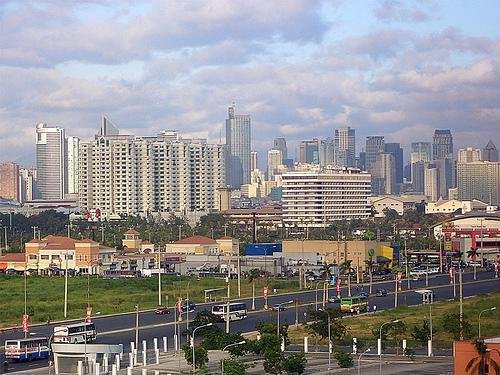Difference between revisions of "Earth Science 7 - Manila, Philippines"
| Line 22: | Line 22: | ||
'''Earthquakes and Plate Boundaries''' | '''Earthquakes and Plate Boundaries''' | ||
| + | |||
Manila, along with all the other Philippine islands, is prone to earthquakes. Another contributing factor to this is the city's location along the Marikina Valley fault system. Manila is located near a convergent boundary with several micro plates being squeezed together with the Eurasian plate. | Manila, along with all the other Philippine islands, is prone to earthquakes. Another contributing factor to this is the city's location along the Marikina Valley fault system. Manila is located near a convergent boundary with several micro plates being squeezed together with the Eurasian plate. | ||
| + | |||
http://whatonearth.olehnielsen.dk/img/philtec.jpg http://volcano.oregonstate.edu/vwdocs/volc_images/southeast_asia/philippines/Philtec.gif | http://whatonearth.olehnielsen.dk/img/philtec.jpg http://volcano.oregonstate.edu/vwdocs/volc_images/southeast_asia/philippines/Philtec.gif | ||
Revision as of 06:56, 22 February 2011
Manila, Philippines
Overview
Manila, Philippines is part of a vast metropolitan area near where the Pasig River meets Manila Bay about 1,300 km from the Asian mainland. The city and its suburbs form a government unit called Metro Manila. Metro Manila has the country's cardinal port, and is the center of most of the commercial, industrial, and cultural activities in the Philippines.

Manila is located at 14°35'00.00N and 120°58'00.00E. It encompasses about 38.3 square km, and its elevation is 18 feet. Manila is on the west coast of Luzon, a Philippine island.
Climate
Manila's yearly rainfall is about 2050 mm. Its average monthly high temperature is about 31-34°C, and its average monthly low temperature is about 21-24°C. On the Koppen Classification scale, Manila is split between Af and Am, meaning tropical rainforest and tropical monsoonal. It has a lengthy wet season, and a short dry season, if any.
Manila is located near the Equator, which explains why it stays relatively within the same temperature range. Another factor in this is that Manila is located on Manila bay, keeping it warmer throughout the year.
Geology
Earthquakes and Plate Boundaries
Manila, along with all the other Philippine islands, is prone to earthquakes. Another contributing factor to this is the city's location along the Marikina Valley fault system. Manila is located near a convergent boundary with several micro plates being squeezed together with the Eurasian plate.


Volcanism
One of the most notable volcanoes near Manila is the Taal Volcano, south of the city. This volcano is still active, last erupting in 1970, and is now a popular tourist attraction. It is a part of a chain of volcanoes along the west side of Luzon, and is located on an island in Lake Taal.

The Philippines are found in a western Pacific arc that is characterized by active volcanoes.
http://www.mongabay.com/reference/country_studies/philippines/GEOGRAPHY.html
http://volcano.oregonstate.edu/vwdocs/volc_images/southeast_asia/philippines/tectonics.html
http://earthquake.usgs.gov/research/geology/manila/
http://geography.howstuffworks.com/asia/geography-of-manila.htm